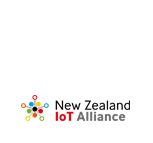The New Zealand IoT Alliance is showcasing how Internet of Things (IoT) applications can enable smart cities and improve industrial productivity at its second annual showcase event in Auckland next week.
IoT Alliance Executive Council member John McDermott says the event will feature a range of applications that help deliver better public services, improve health and safety, and enhance manufacturing performance.
“New Zealand is in the great position of having world class technology available, and plenty of situations that can benefit. Whether it is factory productivity to generate higher paying jobs, improved safety for the public or innovative products and services, we have organisations here that are leading the way,” he says.
LMAC’s work in the manufacturing sector is an example of how IoT can be used to improve productivity on the factory floor, McDermott says.
“Factory managers are in a continuous race to keep operating costs down and improve efficiency. The fuel for improvement is data – you can’t manage what you don’t measure. Managers know their operations in detail but it can be overwhelming when searching for additional efficiencies. What if that cost advantage is hiding in plain sight?” he says.
“LMAC achieved over 37% improvement for a production line by taking as much data as was available from existing operations and applying new metrics generated by smart technology. It used an artificial intelligence system to mash data and come up with predicted improvements. The new system also allowed experiments to be tested to find extra productivity with new combinations of workflow management and batch production, resulting in quicker job turn-around and better asset utilisation.”
Another innovative use of IoT is KotahiNet’s work with Transpower, who are responsible for moving power from where it is generated to where it is consumed. The challenge is that as more power is consumed the power cables sag lower towards the ground because of temperature rises. KotahiNet is providing a remote sensing solution that monitors the distance of the lowest transmission cable from the ground, to ensure it doesn’t dip below the safe limit.
“By knowing the ambient temperature in real time, Transpower is able to correlate it with transmitted power so as to maximise power flows without impacting safety or asset performance. The KotahiNet solution uses low cost, long range wireless sensors deployed on the cables with real-time data for immediate notification if safe limits are approached,” McDermott says.
Meanwhile, ASG Technologies has been working with industrial partners and government agencies, especially those with significant infrastructure assets to manage. By deploying IoT solutions, ASG has improved asset performance, reduced operational costs, and enhanced staff and public safety.
“In the early stages, these projects have a high degree of uncertainty and can be perceived as too risky, but in a tech-disruptive environment, failing to adapt becomes the biggest threat to an organisation. ASG believe that taking measured risks with trusted partners is a necessary element to technology development and should be the preferred method of managing the disruption landscape,” McDermott says.
These are three examples out of the eight projects that will be featured at the IoT Alliance half-day event on Thursday 3 October, 2019 in Auckland.
You can learn more here.






